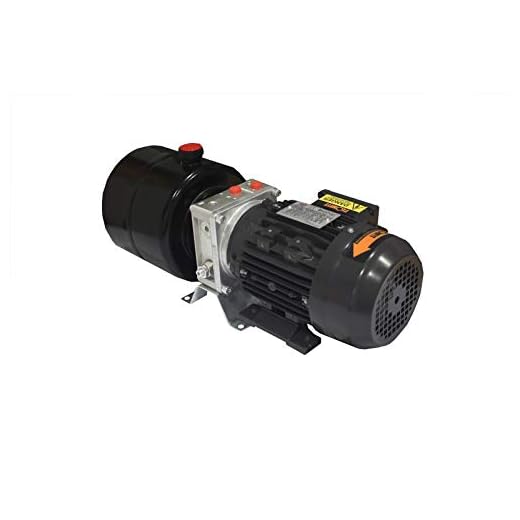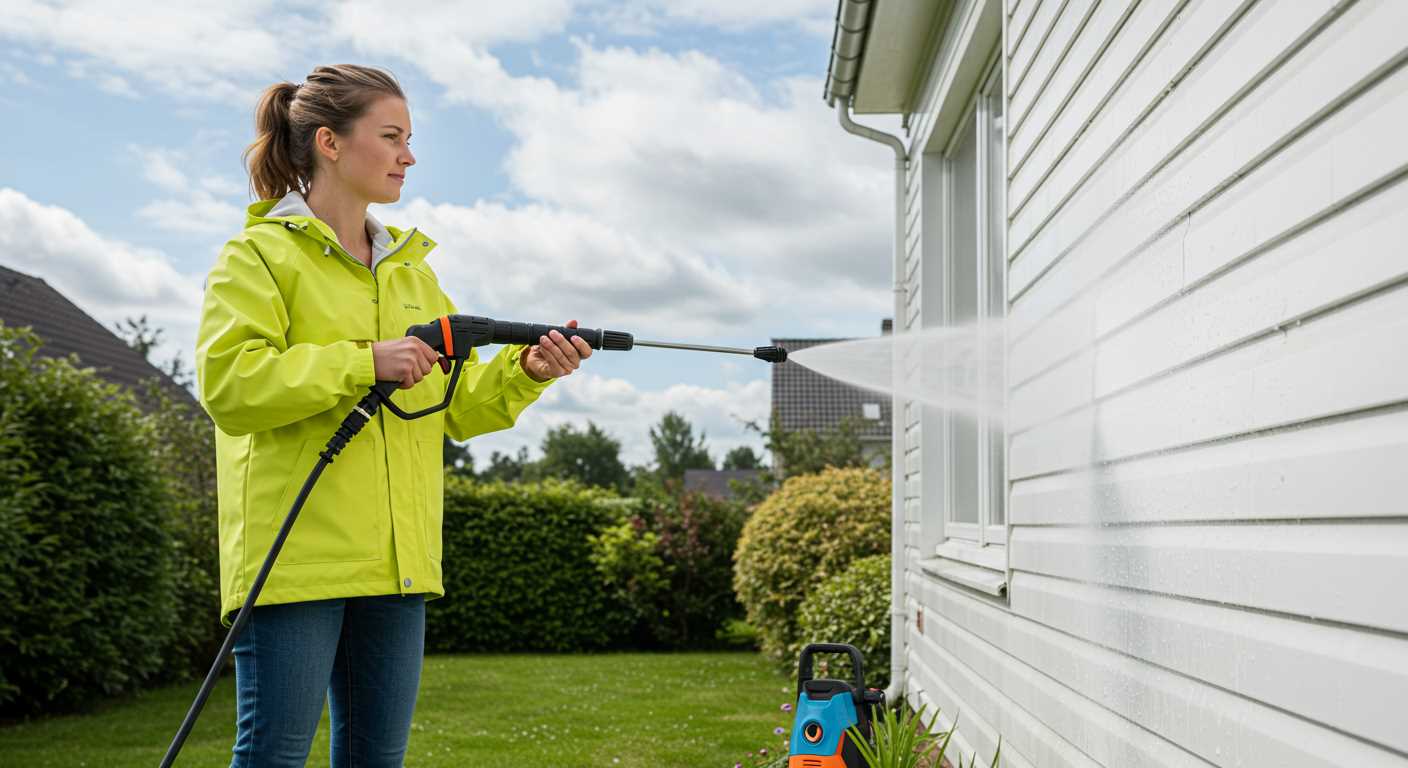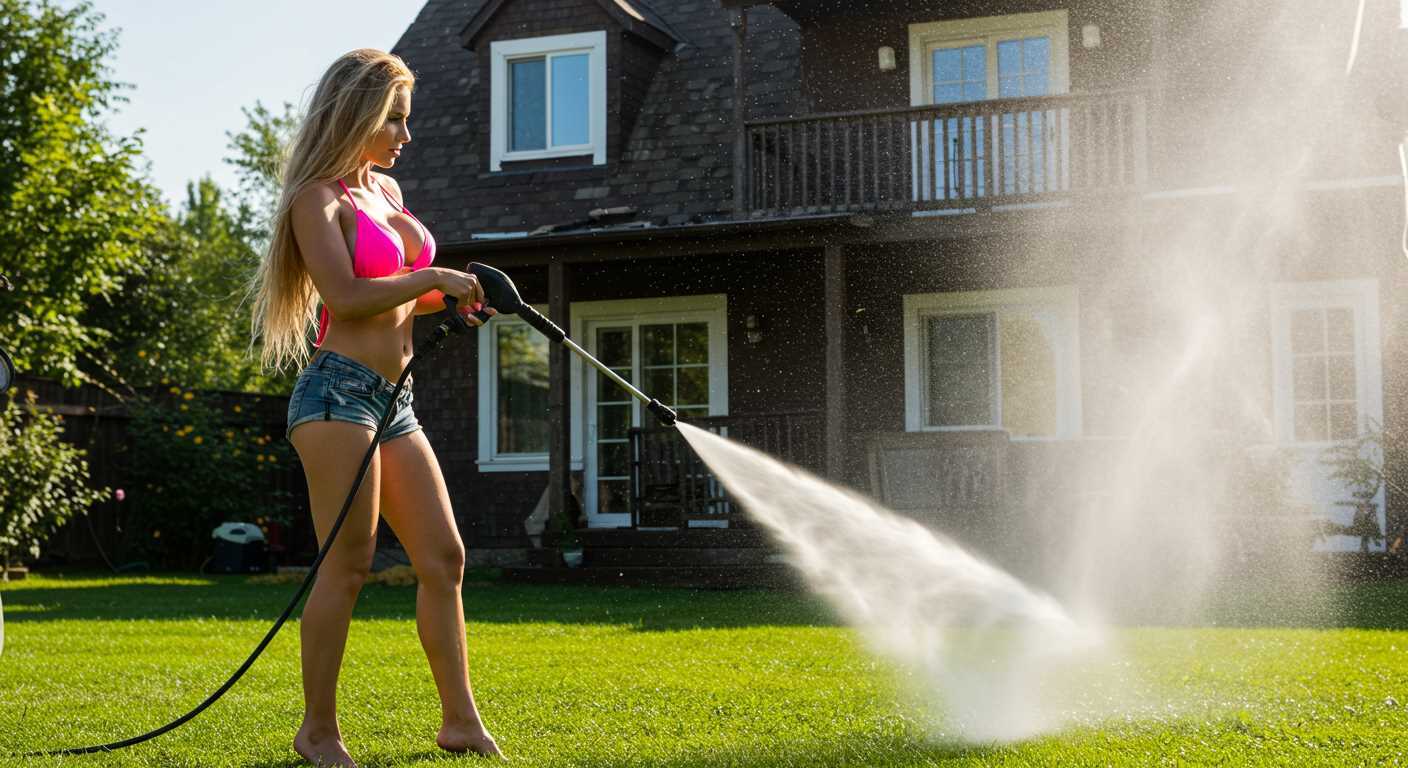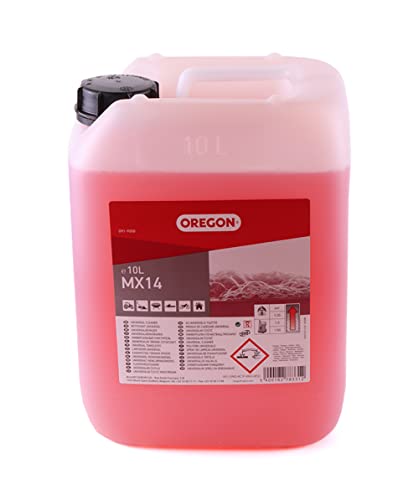



Direct application of a high-pressure cleaning device inside a drain is generally inadvisable. The risk of causing damage to both the equipment and the drain system itself significantly outweighs the potential benefits. High-intensity jets can dislodge debris but may also inadvertently push it further down the line, complicating the situation rather than resolving it.
Testing various models and understanding their capabilities highlighted the limitations of employing this type of device in confined spaces. High-powered jets can create back pressure, leading to unforeseen complications, including injuries or equipment malfunction. Instead, consider using a specialised approach such as a sewer cleaning nozzle designed specifically for navigating pipes and clearing blockages.
For safety and efficiency, always opt for equipment designed with the intended application in mind. Ensure that adequate protective measures are in place, including proper drainage of contaminants before any cleaning occurs. Knowledge and caution are paramount when tackling such tasks to avoid potential hazards and ensure effective results.
Understanding the Risks of Pressure Washing in Confined Spaces
Working in tight areas requires strict adherence to safety protocols. Prior to attempting any cleaning technique in an underground space, ensure proper ventilation and monitor air quality. Exposure to harmful substances and low oxygen levels can pose immediate threats.
Implement fall protection measures due to potential vertical drops. Equipment like harnesses or guardrails is recommended to safeguard against accidents associated with elevation changes. Additionally, maintain clear communication with team members outside the confined space to address emergencies swiftly.
Consider the power of jet spray; the force can dislodge debris unexpectedly. Protect yourself with appropriate personal protective equipment, such as gloves, goggles, and non-slip footwear. Be aware of potential backlash from spray redirecting against surfaces or obstacles.
Using high-pressure devices in a confined area can also lead to equipment overheating. Monitor operational duration and allow for adequate breaks to prevent machinery failure. It’s prudent to familiarise oneself with tools to understand their limits and capabilities.
Lastly, always refer to manufacturer guidelines for specific tools. Compliance ensures not only adherence to safety but also prolongs the lifespan of the equipment. Assess risk factors continuously and prioritise safety above all else during the cleaning process.
Types of Pressure Washers Suitable for Manhole Use
For working in confined environments like access points, certain models are more appropriate. Electric units often triumph in these scenarios due to their lightweight design and ease of handling. They produce less noise and are ideal for restricted spaces.
Combustion engines are powerful, reaching higher pressures, but they emit exhaust fumes, making them less practical for subterranean tasks. They also require careful management for safety.
| Type | Advantages | Disadvantages |
|---|---|---|
| Electric | Lightweight, quiet, zero emissions | Lower pressure, may struggle with heavy debris |
| Gas-Powered | High pressure, powerful cleaning | Heavy, noisy, exhaust fumes |
| Hot Water Units | Enhanced cleaning, effective against grease | More expensive, requires power source |
| Cold Water Units | Cost-effective, easier maintenance | Less effective on certain stains |
Selecting an appropriate model relies on specific tasks. Prioritise safety features and ease of mobility for effective operation in challenging environments.
Safety Precautions When Using a Pressure Washer in a Manhole

Always wear appropriate personal protective equipment (PPE) including gloves, goggles, and a hard hat before entering a confined area. Ensure a full-face respirator is available to protect against hazardous fumes or dust particles that may be present in the space. Having a harness and lifeline for emergency access is advisable, particularly if working alone.
Utilise proper ventilation. Before commencing tasks, ventilate the confined area to minimise harmful vapours. If necessary, employ fans or other equipment to circulate air and maintain a safe environment.
Preparation and Setup
Prior to initiating operations, inspect the cleaning device thoroughly. Check hoses, connections, and the nozzle for any damage. Ensure the water source is reliable and free from contaminants. Implement a clear communication plan if working as part of a team, designating roles to ensure safety measures are followed effectively.
It is advisable to keep an eye on pressure settings. Select moderate levels to prevent excessive force that could lead to mishaps or damage. Stay aware of your position relative to the nozzle, keeping it directed away from your body and ensuring the area is clear of any bystanders or obstacles.
After Use Procedures

Upon completion of tasks, carefully clean the equipment and inspect it for wear and tear. Decontaminate the area, ensuring that all waste materials and debris are disposed of properly. Document any incidents or near-misses for future reference and safety improvements.
By adhering to these safety guidelines, the risks associated with cleaning in a confined space can be significantly reduced, providing a safer working environment.
Best Practices for Cleaning Manholes with a Pressure Washer
Always begin with a thorough inspection of the access point and surrounding area. Remove any surface debris or obstacles that might hinder your operation. Ensure that entry into the confined space is done safely.
Choosing the Right Nozzle
Select a nozzle that suits the task effectively. A rotating nozzle can significantly enhance the cleaning process, especially for stubborn grime and built-up materials. Avoid using a wide fan nozzle, as it may not provide the necessary pressure to dislodge heavy substances.
Proper Technique and Angle

Maintain a 45-degree angle between the nozzle and the surface for optimal impact. Keep the nozzle moving steadily to prevent damage to the surfaces. Start from the top of the interior and work your way down to ensure that debris is flushed away efficiently.
Incorporate short bursts rather than continuous pressure to manage water flow and prevent flooding within the manhole. It’s vital to adjust your approach based on the type of materials present. For greasy or oily residues, consider using a suitable detergent beforehand, ensuring it’s compatible with the cleaning equipment.
Finally, consider timing your cleaning when water levels are low to reduce splatter and improve visibility. Always adhere to local regulations regarding wastewater disposal after the cleaning process is complete.
Legal Considerations When Using Cleaning Equipment in Public Areas
Before engaging in any cleaning activity in public spaces, acquiring the necessary permits is vital. Local regulations often dictate when and where such activities can take place. This applies particularly to cleaning confined areas like drainage systems, where the potential for hazardous situations exists.
Liability insurance is another key factor. Always ensure coverage is in place to safeguard against any mishaps or damages that might occur during the cleaning process. This is particularly pertinent when working near public property or infrastructure. Accidents can happen, and being insured protects both the operator and the organisation from financial repercussions.
Notification to local authorities is generally required before undertaking work in public rights-of-way. They may need to coordinate traffic control, particularly if the cleaning might disrupt pedestrian or vehicular flow. Adhering to local laws not only fosters goodwill with the community but also minimises potential legal penalties.
Compliance with environmental regulations must be regarded. The use of cleaning solutions and disposal of waste water needs assessment according to local environmental guidelines. Understanding what can be released into the sewer system and what must be disposed of in a different manner protects the ecosystem and maintains good community relations.
Training for personnel is paramount. Any staff involved in cleaning activities should comprehend not only operational guidelines but also the legal framework surrounding such tasks. This training ensures that every team member is aware of the responsibilities and legalities associated with their work.
Finally, documenting all procedures and communications regarding the cleaning project creates a verifiable record. In the event of disputes or inquiries, this documentation serves as proof of compliance and due diligence. An organised approach to paperwork can simplify many potential legal challenges.
Alternative Methods for Cleaning Manholes
Consider utilising a combination of mechanical and manual methods for effective cleanliness within confined spaces. Various approaches can complement the high-pressure technique, enhancing overall results.
Mechanical Approaches
- Vacuum Trucks: These vehicles equipped with suction capabilities offer a thorough cleaning method. They can remove debris, sediment, and water without the need for high-pressure systems.
- Augers: A powerful tool that can dislodge stubborn clogs. It works well in combination with other cleaning techniques for comprehensive results.
- Hydraulic Jetting: Unlike standard high-pressure cleaning, this method uses high-velocity water jets to obliterate blockages and wash away contaminants.
Manual Techniques
.jpg)
- Bristle Brushes: For areas that require detail work, using brushes with stiff bristles can effectively remove grime.
- High-Viscosity Cleaners: Applying heavy-duty cleaners can loosen scales and buildups, preparing surfaces for easier removal.
- Handheld Tools: Shovels or trowels can facilitate manual removal of large debris, ensuring a clean slate before other cleaning methods are employed.
Incorporate these techniques based on the specific conditions observed in the manhole. Adaptability and comprehensive planning result in significant improvements to cleanliness. Assess each situation to determine the most suitable approach, ensuring safety measures remain a priority throughout the process.
Maintenance Tips for Your Pressure Cleaning Equipment After Manhole Cleaning
Thoroughly rinse all components, especially the hose and nozzle, with clean water immediately after completing the job. This prevents any debris or chemical residue from settling and causing blockages or damage.
Inspect for Damage
Examine the unit and accessories for any signs of wear, tear, or corrosion. Pay close attention to seals and gaskets, which can degrade due to high-pressure operation or contact with substances that may be present in the manhole.
Clear the Filters
Remove and clean any filters or strainers. Dirt and grime can accumulate, leading to reduced performance. Regular maintenance of these elements improves longevity and efficiency.
Check the oil level if the model features an oil reservoir. Change the oil according to the manufacturer’s guidelines to ensure optimal operation.
Store the equipment in a dry, protected area to prevent rust and damage from environmental factors. Consider using a cover to shield it from dust and moisture.
Document any issues or maintenance performed in a log. Keeping a record supports better understanding of the unit’s performance over time.
Above all, follow the manufacturer’s maintenance schedule. Regular adherence to guidelines will enhance reliability and extend the lifespan of your cleaning equipment.







